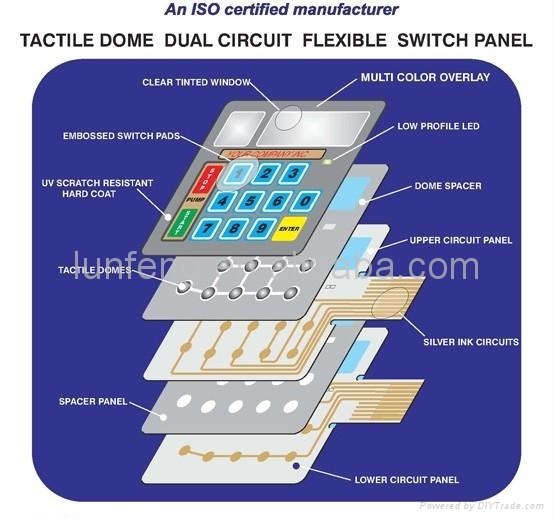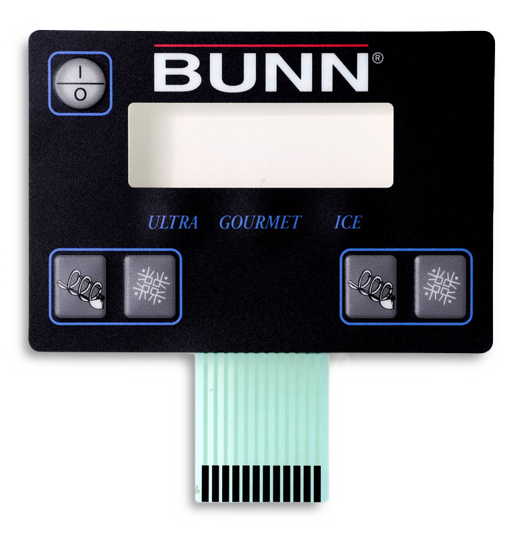The Ultimate Resource on Membrane Layer Switches Over: Design, Performance, and Applications
Membrane layer switches over work as an interesting junction of style and capability, playing a pivotal function in contemporary interface across various industries. This source unboxes the vital elements that contribute to their performance, including graphic overlays and circuit traces, while also elucidating the devices behind their pressure activation. As we explore the diverse applications of membrane buttons, it becomes apparent that their versatility and toughness are vital in environments ranging from healthcare to customer electronics. Nonetheless, the subtleties of their style and functional principles might disclose also deeper insights worth considering.

Understanding Membrane Switches
Membrane switches are a type of interface technology widely used in various electronic devices, characterized by their slim, flexible design and capability. These buttons include numerous layers that include graphic overlays, sticky layers, and circuitry, allowing a small and efficient interface for users. They can be found in devices, clinical gadgets, and industrial control board, giving a reputable technique for individual interaction.
One of the key benefits of membrane layer switches is their capacity to stand up to impurities such as dirt and wetness, making them appropriate for environments where durability is important. Their low-profile design permits smooth integration right into various applications, while the personalized graphic overlays improve individual experience by offering clear aesthetic responses. Additionally, membrane buttons can accommodate a variety of modern technologies, such as tactile feedback and backlighting, additional improving their functionality.
The manufacturing procedure for membrane changes commonly includes display lamination, printing, and die-cutting methods, ensuring precision and uniformity in manufacturing. In general, membrane switches stand for a effective and flexible solution for contemporary electronic devices, integrating capability with visual charm in user interface layout.
Key Parts and Style Components
A range of crucial elements and style elements integrated to produce a reliable membrane switch. At the core, the visuals overlay serves both useful and visual objectives, offering an user-friendly interface while securing interior components from environmental factors. The option of products, usually polyester or polycarbonate, influences resilience and responsive feedback.
Below the overlay, the sticky layer makes sure the button adheres securely to the substratum, which can be glass, metal, or plastic. The spacer layer is crucial, as it keeps the needed gap in between the overlay and the circuit layers, enabling reliable actuation. Membrane Switches. Circuit traces, typically made from conductive ink or adhesive, are printed on a versatile substrate, allowing electrical signals to be transferred when pressure is applied
Style factors to consider additionally include the setup of responsive domes or embossing that offer physical feedback to the user, enhancing the general experience. In addition, the layout and spacing of the switches should be enhanced for convenience of usage, ensuring that users can navigate the interface without effort. On the whole, these parts and design elements work synergistically to produce a dependable, practical membrane layer switch tailored to certain applications.
Capability and Procedure Device
At the heart of efficient capability for membrane changes exists their operational system, which facilitates individual click here for info interaction through an easy yet effective design. These buttons operate the principle of pressure activation, where a user applies pressure to an assigned area of the button (Membrane Switches). This activity compresses the layers of the button, completing an electrical circuit that sends a signal to the linked tool
The construction normally consists of a top graphic layer, an adhesive spacer layer, and a lower circuit layer, which jointly form a robust user interface. When pressure is used, the top layer collapses versus the bottom circuit layer, allowing conductive traces to connect. This design not just allows clear tactile responses however also guarantees toughness and dependability, as the buttons are commonly resistant to dirt and wetness.
Furthermore, the flexibility of membrane layer switches enables assimilation with numerous innovations, including LED signs and microcontrollers, enhancing their capability. By offering a structured interface that lessens mechanical wear, membrane switches stay a favored option in applications ranging from customer electronics to industrial tools, making sure optimal performance and customer fulfillment across varied atmospheres.
Sorts Of Membrane Layer Buttons

Another considerable group is brightened membrane layer buttons, which incorporate backlighting to improve exposure in low-light problems. These buttons are often utilized in control panels and control panels where clear visibility is vital.
Furthermore, there are custom-made membrane changes created to meet particular dimensional, graphical, and functional requirements. These personalizations can include one-of-a-kind shapes, colors, and designs, enabling seamless assimilation into various gadgets.

Applications Throughout Different Industries
Just how do membrane buttons enhance capability across varied sectors? In the medical field, membrane buttons play a vital duty in devices such as diagnostic devices and person surveillance systems, where dependability and simplicity of cleansing are vital.
In the automobile sector, membrane layer buttons are typically made use of in dashboards and control panels, providing user-friendly controls that boost chauffeur security and ease. The consumer electronics field also gains from their light-weight and personalized functions, making it possible for sleek styles for smart devices and home devices.
Furthermore, membrane buttons locate applications in commercial automation, where they contribute to effective machinery procedure and monitoring systems. Their resistance to dust and wetness makes certain functionality in demanding conditions (Membrane Switches). Furthermore, the food and beverage industry uses membrane layer buttons for equipment control, where hygiene and resilience are essential
Final Thought
In final thought, membrane changes represent a our website vital advancement in customer interface technology, characterized by their distinct layout and functionality. The adaptability of membrane changes facilitates their application throughout diverse markets, from medical tools to consumer electronic devices.
Membrane switches over serve as an appealing intersection of design and performance, playing a crucial duty in modern individual interfaces throughout different sectors.Membrane buttons are a type of individual interface technology commonly made use of in different digital gadgets, identified by their thin, adaptable design and functionality.At the heart of reliable functionality for membrane switches exists their operational mechanism, which helps with user interaction via a straightforward yet effective layout. These switches operate on the concept of pressure activation, where an individual applies pressure to a marked area of the button.In conclusion, membrane switches over represent a crucial development in customer interface technology, defined by their one-of-a-kind design and performance.